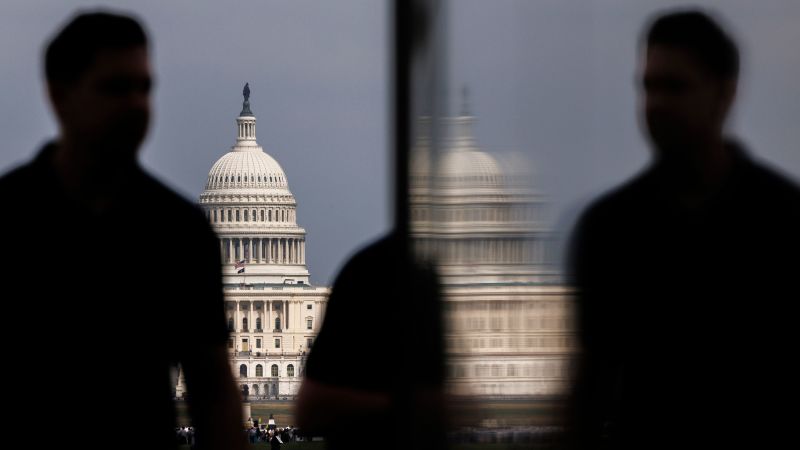As the 2026 elections loom closer, the Democratic Party finds itself grappling with a sense of urgency and concern regarding its positioning in various Senate races across the country. The urgency is primarily driven by a history of electoral losses that have marginalized their influence, coupled with a heightened need to present a coherent and compelling platform beyond their traditional strongholds. A recent article highlights the panic that has emerged within the Democratic ranks as they begin to recruit candidates and strategize for the impending elections—a clear sign that party leaders are aware of the uphill battle they face in regaining influence and seats.
The questions surrounding the Democratic Party’s strategy for 2026 are myriad. Analysts wonder whether the party will truly contest all available seats or opt to focus resources conservatively on more winnable positions. Moreover, the party must navigate a broad ideological spectrum within its potential candidates, ranging from those aligned with far-left ideals akin to those of Bernie Sanders to moderates who might occasionally lean towards the Republican side, such as those who have voted with Trump.
Given the current political landscape, Democrats confront one of the most challenging sets of Senate races they have encountered in decades. Jaime Harrison, a former Democratic National Committee chair and Senate candidate in South Carolina, articulated the disheartening reality by noting that while the Senate map appears unfavorable, there is potential for success if the electoral tide shifts significantly. Harrison’s mantra remains: “recruit a Democrat for every damn seat,” emphasizing the need to saturate the field with candidates, regardless of the difficulty.
Despite Harrison’s ambitious fundraising efforts, the reality of the Republican stronghold in South Carolina illustrated the challenges faced when trying to unseat entrenched figures such as Sen. Lindsey Graham. Yet, there remains a glimmer of hope within the party due to internal polling suggesting that Trump’s popularity is waning, leading to speculation among Democratic operatives that the 2026 elections could mirror the Democratic wave seen in 2006.
As the landscape of Senate races takes shape, Democrats face the prospect of having three incumbent senators bow out, with the possibility of more following suit. The party is tasked with defending vulnerable seats, notably in Georgia, while simultaneously trying to capitalize on opportunities in states like Maine and North Carolina—where Democrats have faced repeated setbacks in previous election cycles.
Despite efforts to strategize, doubts linger among voters regarding the Democratic Party’s identity. Wiley Nickel, a Senate candidate in North Carolina, notes that voters frequently question what the party genuinely stands for. Candidates are now compelled to address pressing issues and articulate clear stances on matters such as opposing Trump’s agenda and supporting party leadership.
Strategists are divided over their approach, with Senate leaders like Chuck Schumer and Sen. Kirsten Gillibrand working meticulously to identify robust candidates to galvanize the party’s efforts—especially given the need for a winning message that can resonate in diverse regions. While large-scale recruitment is anticipated, grassroots efforts from progressive groups are also emerging, reflecting a conscious drive to elevate candidates who resonate with voters.
El-Sayed, a candidate in Michigan supported by Sanders, noted the frustration reflected in voters’ sentiments—signifying a feeling of despair regarding the political landscape and the need for a renewed mission for the Democratic Party. Candidates like Mallory McMorrow are positioning their campaigns around principles of success, safety, and satisfaction, hoping to craft a new identity for the party that can appeal to disillusioned voters.
In key battlegrounds such as Georgia and Texas, candidates are gaining traction by advocating for straightforward governance and a focus on local needs rather than ideological confrontations. New candidates from various backgrounds are emerging, with individuals like Jon Ossoff in Georgia leveraging their previous success to model paths for potential new candidates in traditionally red states.
Meanwhile, other candidates across the nation are also stepping up to challenge the GOP incumbents. In South Carolina, pediatrician Annie Andrews is exploring her chances against Lindsey Graham, while the resilient Mary Peltola in Alaska is called to take the challenge against Dan Sullivan with hopes for an edge in the unique voting system of the state.
As the Republicans get embroiled in their own intra-party conflicts, Democratic candidates are recognizing the critical need to connect with voters and articulate a shared vision. National party operatives acknowledge that the upcoming elections will necessitate tactical precision and an emphasis on elevating credible candidates who can effectively reassess and reframe the image of the Democratic Party in the eyes of the American electorate, crafting campaigns that underscore unity and hope in this pivotal moment of crisis.



